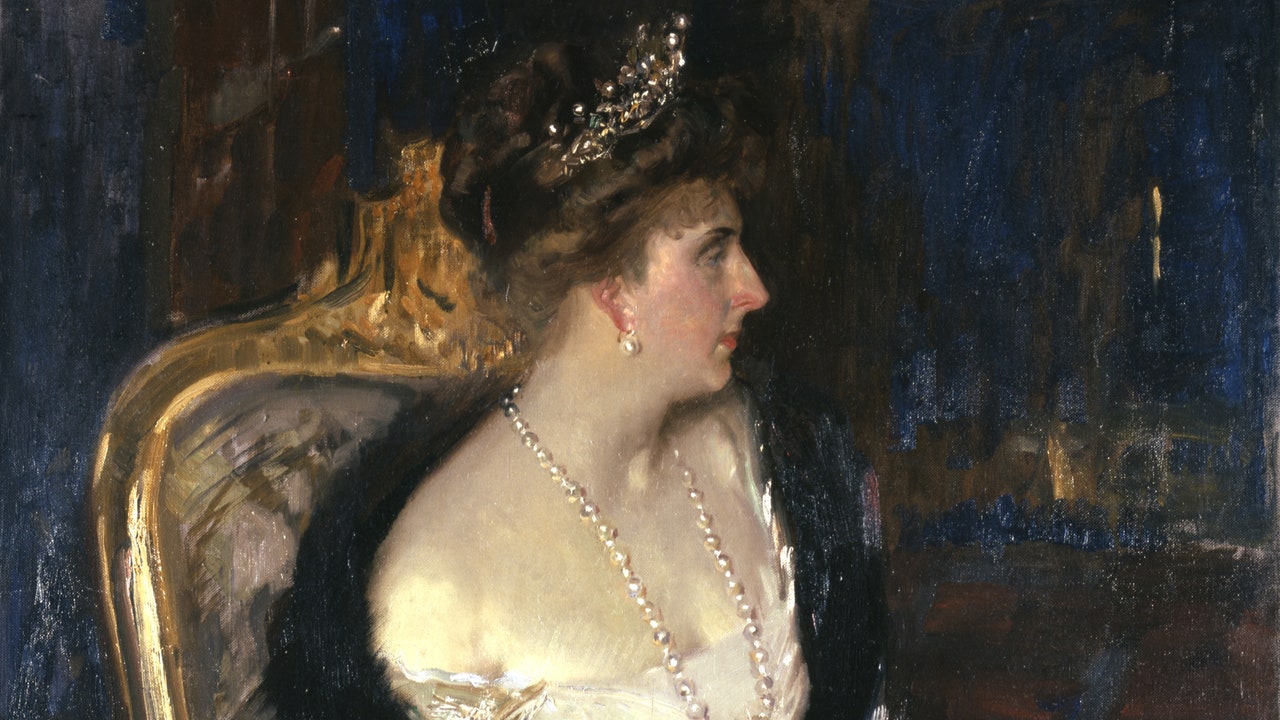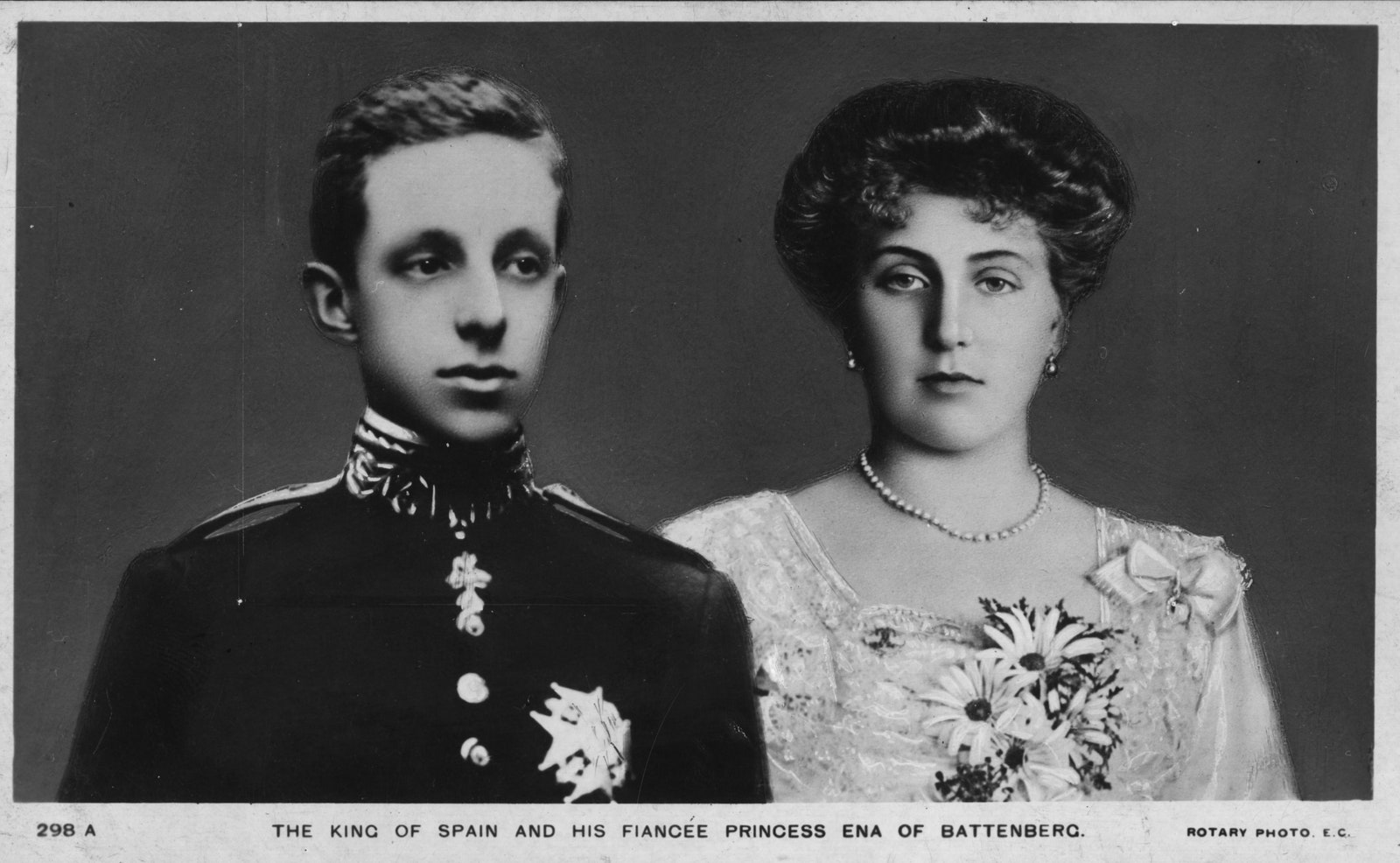Throughout their intercontinental courtship, it soon became clear that Alfonso’s mother, Queen Maria Cristina, did not share her son’s fondness of Ena. Her list of concerns were threefold: one, she did not consider the Battenbergs to be royal, regardless of any royal edict; two, Ena was Anglican, not Catholic; three, her family had a history of haemophilia, and Maria Cristina feared introducing the genetic disease into the Spanish royal bloodline. The first two of the Queen’s complaints were dealt with (Victoria Eugenie agreed to convert, and was shipped off to Versailles to receive instruction in the Catholic faith), but the third would haunt her family for the rest of Ena’s days.
But first: the wedding. For the illustrious, if controversial, occasion, Alfonso gave his bride the fleur-de-lis tiara, which would go on to become one of the most significant pieces of jewellery in Spanish royal history. Alongside a necklace of pearls, which had once belonged to Queen Isabel II, and a pair of diamond and platinum earrings, the wedding gift compromised the joyas de pasar collection, which is passed down between the Queens of Spain to this day. Ena’s dress was cut from white lace and adorned with lilies.
On 13 May 1906, an estimated 400,000 people gathered to watch the royal procession outside the Church of Saint Jerome the Royal. Spain’s most aristocratic houses attended, with godparents including Infante Carlos of Bourbon-Two Sicilies. The Minister of Grace and Justice registered the marriage in an official register, and, with that, Victoria Eugenie became the Queen of Spain.

